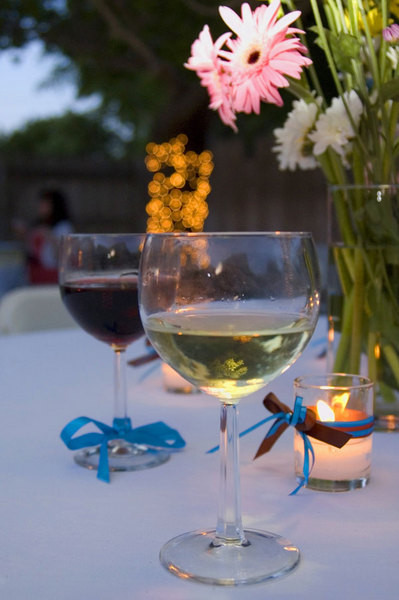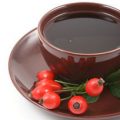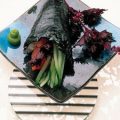 What to file for the wineconsiderations. Complex tastes require simple wines, complex wines need simple dishes: the thinner the wine, the simpler the food. Tastefulness - the main indicator for choosing a drink for this dish. Better, tastier, more pleasant can be less seasoned, less valuable and expensive wine, if it corresponds to the dish, than the oldest, precious, if the taste of this drink, its aroma, the bouquet does not emphasize, does not reveal the characteristic features and advantages of the dish, but is in sharp inconsistency with him. Ordinary, ordinary wine, together with some dish, can make an “taste ensemble” immaculate in its properties. Shades of wine taste and food should match: for sweet it is better to serve young wine with a bright fruity taste (dry wine with dessert will seem sour, but it is best suited to spicy dishes). Sequence. So, before eating, to whet your appetite, drink aperitif. White table wines - to snack, light meat and fish dishes. Natural dry, semi-dry and semi-sweet wines go well with vegetable dishes. Red canteens are suitable for lamb, veal, game, poultry, kebab, pilau, ham. Sherry or Madeira is also well served with meat or chicken broth. Liquor, dessert wines, sweet brands of champagne are recommended for dessert - confectionery, fruit, coffee, ice cream. Champagne can be served and a light snack - cheese, dry baked cookies. Dry and semi-dry champagne can be drunk both at the beginning and during lunch, dinner, and also for dessert.
What to file for the wineconsiderations. Complex tastes require simple wines, complex wines need simple dishes: the thinner the wine, the simpler the food. Tastefulness - the main indicator for choosing a drink for this dish. Better, tastier, more pleasant can be less seasoned, less valuable and expensive wine, if it corresponds to the dish, than the oldest, precious, if the taste of this drink, its aroma, the bouquet does not emphasize, does not reveal the characteristic features and advantages of the dish, but is in sharp inconsistency with him. Ordinary, ordinary wine, together with some dish, can make an “taste ensemble” immaculate in its properties. Shades of wine taste and food should match: for sweet it is better to serve young wine with a bright fruity taste (dry wine with dessert will seem sour, but it is best suited to spicy dishes). Sequence. So, before eating, to whet your appetite, drink aperitif. White table wines - to snack, light meat and fish dishes. Natural dry, semi-dry and semi-sweet wines go well with vegetable dishes. Red canteens are suitable for lamb, veal, game, poultry, kebab, pilau, ham. Sherry or Madeira is also well served with meat or chicken broth. Liquor, dessert wines, sweet brands of champagne are recommended for dessert - confectionery, fruit, coffee, ice cream. Champagne can be served and a light snack - cheese, dry baked cookies. Dry and semi-dry champagne can be drunk both at the beginning and during lunch, dinner, and also for dessert.  For champagne served outside lunch ordinner, it is recommended to serve various cheeses, as well as dry biscuits, pastries, cakes, sweets, sweets, fruits, nuts, pistachios, fried salted almonds. For spicy salads, meats - cold veal, boiled tongue, cold cuts, ham - a glass of strong (but not dessert) red or white vermouth is good. Despite some sweetness inherent in this drink, its peculiar aroma, bitter aftertaste, the smell of wormwood, cinchona and cloves harmonize well with the taste of many snacks. Light white wines of mild taste and delicate aroma without sharp acidity or semi-dry wine and champagne are most suitable for oysters, mussels, shrimps. Strong grape wines are recommended for the first courses - Madeira, port, sherry, Marsala; to and broths - sherry and Madeira. For hot fish dishes - steamed fish, boiled, in brine, for fish dishes cooked with delicate sauces, for fish knelles and fried fish, you can offer white dry grape wines. Rieslings are especially recommended for these dishes. Red dry grape wines are recommended for the second meat dishes - steak, fillet, langeta, entrecote, escalope, various natural and breaded cutlets, schnitzel, rump steak, fried beef, lamb, pork, veal, dishes made from liver, kidneys, brains. Wine, served inappropriately, not to “its” dish or the wrong temperature, loses a lot in its merits. The taste of the wine is spoiled by tobacco smoke, spicy culinary odors, vinegar, citrus fruit acid, fatty fish, vanilla, mocha and cinnamon, pure chocolate (excluding only fortified wines from muscat varieties), as well as mint. the taste of the wine must also have an appropriate temperature.
For champagne served outside lunch ordinner, it is recommended to serve various cheeses, as well as dry biscuits, pastries, cakes, sweets, sweets, fruits, nuts, pistachios, fried salted almonds. For spicy salads, meats - cold veal, boiled tongue, cold cuts, ham - a glass of strong (but not dessert) red or white vermouth is good. Despite some sweetness inherent in this drink, its peculiar aroma, bitter aftertaste, the smell of wormwood, cinchona and cloves harmonize well with the taste of many snacks. Light white wines of mild taste and delicate aroma without sharp acidity or semi-dry wine and champagne are most suitable for oysters, mussels, shrimps. Strong grape wines are recommended for the first courses - Madeira, port, sherry, Marsala; to and broths - sherry and Madeira. For hot fish dishes - steamed fish, boiled, in brine, for fish dishes cooked with delicate sauces, for fish knelles and fried fish, you can offer white dry grape wines. Rieslings are especially recommended for these dishes. Red dry grape wines are recommended for the second meat dishes - steak, fillet, langeta, entrecote, escalope, various natural and breaded cutlets, schnitzel, rump steak, fried beef, lamb, pork, veal, dishes made from liver, kidneys, brains. Wine, served inappropriately, not to “its” dish or the wrong temperature, loses a lot in its merits. The taste of the wine is spoiled by tobacco smoke, spicy culinary odors, vinegar, citrus fruit acid, fatty fish, vanilla, mocha and cinnamon, pure chocolate (excluding only fortified wines from muscat varieties), as well as mint. the taste of the wine must also have an appropriate temperature. White dry wines tastes best slightlycooled (to 10-12 ° C). In summer, these wines can be cooled to 8-10 ° C. They perfectly quench thirst and give coolness. Red dry wines, on the contrary, slightly warm up. They should have a temperature slightly above room temperature, i.e. 18-20 ° С, in the summer 16-18 ° С. Sherry and Madera warmed to 4-5 ° C above room temperature (a glass of mulled wine after frost - what could be better?). Dessert wines, nutmegs, tokai must have room temperature (16-18 ° C). There is a widespread belief that champagne is delicious almost frozen. This opinion is certainly erroneous, because the sharp burning sensation of cold drowns out the pleasant “sparkling” of this drink. Champagne most fully and harmoniously reveals all its advantages when cooled, but not lower than 6-7 ° С. Enjoy your meal!
White dry wines tastes best slightlycooled (to 10-12 ° C). In summer, these wines can be cooled to 8-10 ° C. They perfectly quench thirst and give coolness. Red dry wines, on the contrary, slightly warm up. They should have a temperature slightly above room temperature, i.e. 18-20 ° С, in the summer 16-18 ° С. Sherry and Madera warmed to 4-5 ° C above room temperature (a glass of mulled wine after frost - what could be better?). Dessert wines, nutmegs, tokai must have room temperature (16-18 ° C). There is a widespread belief that champagne is delicious almost frozen. This opinion is certainly erroneous, because the sharp burning sensation of cold drowns out the pleasant “sparkling” of this drink. Champagne most fully and harmoniously reveals all its advantages when cooled, but not lower than 6-7 ° С. Enjoy your meal!

Making Money with Desserts: Success Stories
Yevhen Polishchuk (Fedutinov) instagram: @ evgeniyafedutinovavk.com / janeshomebaking– It all started with baking for relatives and friends. Gradually, she began uploading photos of her baking to Instagram, and orders began to come in. I made my first cake to order on October 13, 2014, and a little earlier I started making macarons and cupcakes. We can say that the business "found me myself", I am very [...]

Soups are cold recipes with photos
Cold cucumber soup with yogurt and lemonSorbet from La Taverna restaurant chef Alexander Zhurkina Photo: Getty Images Ingredients: Yoghurt without additives - 125 gCucumber - 150 gSorbet lemon / lime - 50 gCool shrimp - 24 gFresh ginger - 1 gLime lime - 5 gFresh orange juice - 5 gPetroshka - 1 g pink - 1 gCress salad - […]

barbeque kebab
Pork tenderloin glaze Photos: Dmitry Bayrak / dbstudio Cooking time: 20 minutes + time for pickling. Calorie content: 454 kcal per 1 serving. For 4 servings: 4 pork tenderloin (about 300 g each), 1 onion, 2 cloves of garlic, 1 tsp. lemon peel, 1 tsp. lemon juice, a pinch of ground cumin, coriander and turmeric, 1 tbsp. l vegetable [...]

Pierre Duacan: dietary recipes: Ducane diet
Beetroot Photo: Season'S, Luxury Hotels Representation You will need: · Boiled beets - 60 g · Fresh cucumbers - 20 g · Red radish - 20 g · Green onions - 10 g · Egg - 1 pcs · Mineral drinking water - 200 g · Salt - 1 g Ready: · Boil egg and beetroot. · Grind cucumbers, radishes and a part of beets. Putting everything [...]





